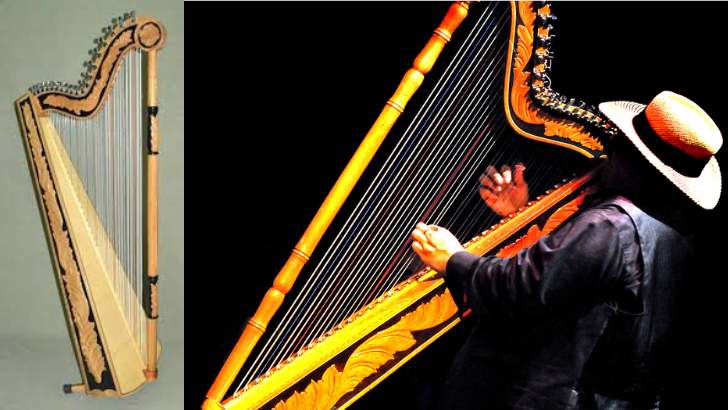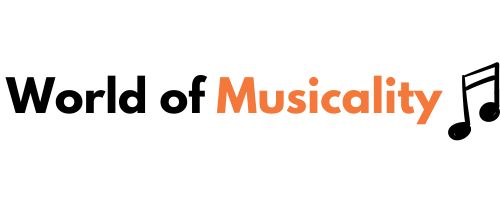
The Paraguayan harp is a large, diatonically tuned instrument known for its rich, warm sound and ornate designs.
It typically has between 32 to 36 strings made of nylon, and its body is crafted from tropical hardwoods of South America.
Used widely used in traditional folk music the instrument has gained international recognition for its distinctive sound and vibrant appearance.
Instrument Description
| Instrument Name | Paraguayan Harp |
| Instrument Family | String |
| Alternative Names | The Paraguayan harp is also referred to as “arpa paraguaya” in Spanish. It is closely related to the traditional harps used in Latin America, particularly in Paraguay, where it has become a national symbol. |
| Geographical Presence | The Paraguayan harp is primarily played in Paraguay and other parts of Latin America, including Argentina, Brazil, and Venezuela. It has also gained international popularity, especially in folk and world music circles. |
| Instrument Classification | The Paraguayan harp falls under the Hornbostel-Sachs classification system as 322.22, identifying it as a plucked idiophone with strings. This system classifies musical instruments based on how they produce sound, and the harp is classified as a ‘chordophone’ where sound is produced by vibrating strings. |
| Unique Features | The Paraguayan harp is known for its deep, resonant tone and the intricate designs on its body. It often features a larger soundbox compared to other harps, which contributes to its rich sound. The harp is also highly portable, making it suitable for folk performances. |
| Sound Characteristics | The Paraguayan harp produces a rich, warm sound with a deep resonance. It has a distinctive timbre that is both bright and mellow, making it suitable for a wide range of music styles, from traditional Paraguayan folk music to classical and contemporary genres. |
| Typical Music Genres | The Paraguayan harp is primarily used in traditional Paraguayan music, including polkas and guaranias. It is also used in other Latin American folk music, classical music, and contemporary compositions. |
| Components | Soundboard, Pillar, Neck, Strings, Tuning Pins, Levers |
| Construction | The Paraguayan harp is traditionally made of tropical hardwoods such as cedar or mahogany. The body consists of a large soundbox, a curved neck, and a pillar. The strings are usually made of nylon, and the tuning pins are made of metal. |
| Size and Weight | The size of the Paraguayan harp can vary, but they typically range from 1.2 to 1.5 meters (4 to 5 feet) in height. The weight varies between 6 to 10 kilograms (13 to 22 pounds), depending on the size and materials used. |
| Variations and Customizations | Variations of the Paraguayan harp include different sizes, numbers of strings, and decorative elements. Customizations might include intricate carvings, inlays, and finishes. Some harps are designed to be lightweight for easier transport. |
| Instrument History | The Paraguayan harp has its origins in the early 17th century when Spanish missionaries introduced European harps to South America. Over time, local craftsmen adapted the instrument to suit indigenous musical styles, resulting in the unique Paraguayan harp we know today. It became a symbol of national pride and cultural heritage in Paraguay. |
| Similar Types of Harp | Andean Harp, Llanera Harp, Mexican Harp, Celtic Harp |
| Playing Technique | The harpist plucks the strings with their fingers, using both hands to create melodies, harmonies, and arpeggios. The technique often involves rapid finger movements and dynamic control to produce the characteristic sound of Paraguayan music. Proper hand positioning and finger techniques are essential for producing a clear and resonant sound. |
| Notable Composers | Félix Pérez Cardozo, José Asunción Flores, Digno García |
| Famous Works | Cardozo’s “Pájaro Campana,” Flores’ “India,” García’s “Recuerdos de Ypacaraí” |
| Maintenance | Regular maintenance includes tuning the strings, adjusting the levers, and occasional string replacement. The wooden body should be kept clean and occasionally polished. Proper storage in a controlled environment is important to prevent damage from humidity and temperature changes. |
| Learning Difficulty | Moderate to high; requires coordination and finger dexterity to manage the strings and levers simultaneously. Learning proper hand techniques and music theory is important for effective playing. |
| Prominent Players | Celso Duarte, Sixto Corbalán, Nicolas Caballero |
| Notable Performances | Notable performances include the Festival Mundial del Arpa en Paraguay, and concerts by prominent harpists at venues and festivals around the world. |
| Famous Orchestras/Bands | Prominent ensembles featuring the Paraguayan harp include the Paraguay Symphony Orchestra, and various traditional Paraguayan folk groups. |
| Price Range | Paraguayan harps range from $1,000 to $5,000 or more, depending on the size, materials, and craftsmanship. Beginner models start around $1,000, while professional models with custom features can exceed $5,000. |
| Interesting Facts | 1. The Paraguayan harp is considered the national instrument of Paraguay. 2. Félix Pérez Cardozo is one of the most influential Paraguayan harpists, known for popularizing the instrument internationally. 3. The largest Paraguayan harp in the world is over 5 meters tall and was built as a tribute to Paraguayan culture. 4. The Paraguayan harp is often played at traditional celebrations and festivals throughout Latin America. 5. The instrument is known for its intricate designs, often featuring traditional Paraguayan motifs and symbols. |
If you would like to learn more facts about the amazing world of musical instruments, visit our homepage at worldofmusiclality.com or click the links below to explore the rest of our site.







